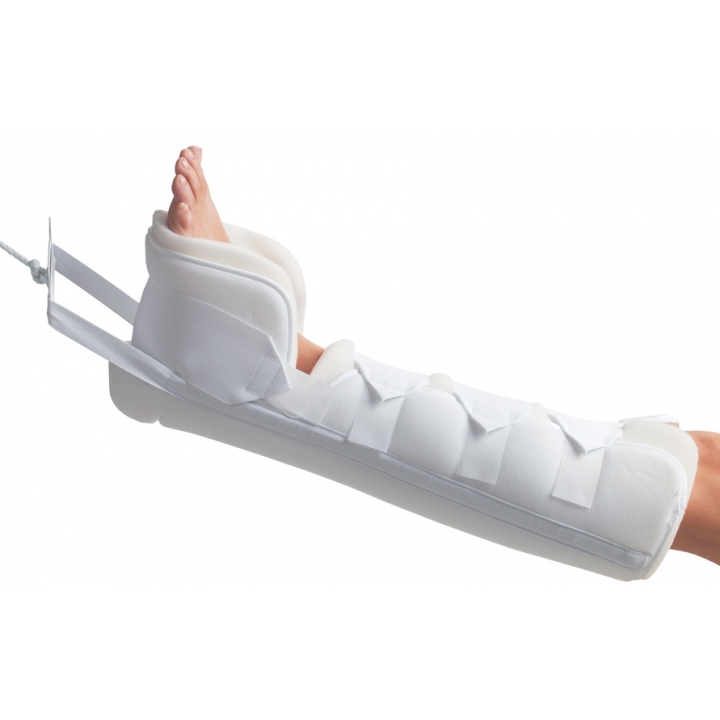Introduction
Embarking on the path of recovery often requires specialized techniques, and one such powerful method gaining traction in the medical world is buck traction. In this article, we delve into the nuances of this innovative approach, exploring its applications, benefits, and everything you need to know to make the best decisions for your health.
The Essence of Buck Traction
Buck Traction Defined Buck traction, a revolutionary orthopedic technique, involves the use of pulleys, weights, and traction to align and stabilize fractures or dislocations. This method, named after renowned surgeon Dr. Buck, has transformed the landscape of orthopedic care.
Applications Across Medical Realms From fractures to joint dislocations, buck traction proves versatile in addressing a spectrum of orthopedic issues. Whether it’s a complex femur fracture or a dislocated shoulder, the precision and adaptability of buck traction make it a preferred choice among healthcare professionals.
Understanding the Mechanism
Pulleys and Weights: The Dynamic Duo At the core of buck traction are pulleys and weights. The strategic placement of these elements allows for controlled and gradual alignment, ensuring minimal discomfort for the patient. The science behind this method lies in its ability to provide constant, gentle force, promoting optimal healing.
Patient Comfort and Compliance Unlike traditional traction methods, buck traction prioritizes patient comfort. Its design minimizes the risk of complications and discomfort, fostering better compliance with the treatment plan. This makes it not just a medical solution but a patient-centric approach to healing.
Advantages Over Traditional Methods
Enhanced Precision Buck traction’s precise nature sets it apart from conventional traction methods. Healthcare providers can exert meticulous control over the force applied, reducing the risk of over-tightening or inadequate traction.
Reduced Complications The risk of complications, such as pressure sores and nerve damage, is significantly lower with buck traction. Its design mitigates potential issues, ensuring a smoother recovery process for patients.
Exploring Buck Traction in Practice
Success Stories: Real-Life Transformations To truly grasp the impact of buck traction, let’s delve into real-life success stories. Patients who have undergone buck traction share their journeys, highlighting the positive outcomes and life-changing experiences.
Addressing Common Concerns
Is Buck Traction Right for You? Understanding the eligibility criteria for buck traction is crucial. Factors such as age, overall health, and the specific nature of the orthopedic issue play pivotal roles in determining the suitability of this method.
Managing Expectations Patients often wonder about the duration of buck traction and the expected outcomes. Managing expectations is essential for a positive treatment experience. We break down the process, timelines, and what patients can anticipate during and after buck traction.
Frequently Asked Questions
Q: How does buck traction differ from other traction methods? Buck traction distinguishes itself through its precision, patient-centric approach, and reduced risk of complications. Unlike traditional methods, it prioritizes both effectiveness and patient comfort.
Q: Are there any age restrictions for buck traction? While there isn’t a strict age limit, healthcare providers consider the patient’s overall health and the specific orthopedic issue before recommending buck traction. It is generally safe for a wide age range.
Q: Can buck traction be used for spinal issues? Buck traction is primarily designed for fractures and dislocations in limbs. For spinal issues, alternative traction methods may be more suitable. Consultation with a healthcare professional is crucial for personalized recommendations.
Q: Is buck traction painful? Patients may experience mild discomfort initially, but the controlled and gradual application of force minimizes pain. Healthcare providers prioritize patient comfort throughout the treatment.
Q: How long does the recovery process take with buck traction? The duration varies based on the severity of the orthopedic issue. Generally, patients start experiencing improvements within weeks, with complete recovery taking several months. Consistent follow-ups with healthcare providers are essential.
Q: Are there any lifestyle restrictions during buck traction? While some restrictions may apply, they are typically temporary. Healthcare providers provide personalized guidelines to ensure a smooth recovery, emphasizing the importance of following their recommendations.
Conclusion
In the realm of orthopedic solutions, buck traction emerges as a beacon of precision, patient comfort, and positive outcomes. This article has journeyed through its definition, applications, advantages, practical insights, and addressed common concerns. Now armed with knowledge, you can make informed decisions for a smoother path to recovery.



